


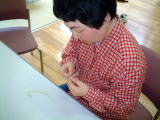
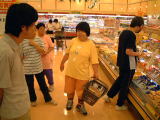
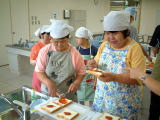
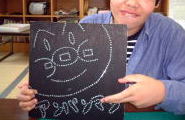

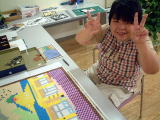

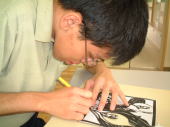
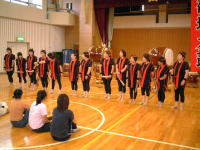
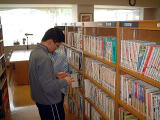


Paper-cutting work. Then users use drawing paper and cutting tools to make various patterns, most of them fine delicate expressions. This work is popular through youth to elderly people. The finished works are exhibited at the center and in public places.
Dot arts. Scenery photographs, and character are used as the original pictures and users color them with dots. This work is popular with the villagers and especially the small children who visit the health center for the medical checkup in the village. Users who create dot art look forward to hearing children admire their work.
Other activities which enrish the user's ability to tackle everyday life tasks include things like screw drawing stencil drawing, bead work and quilting.
CAI software is used to create CG work, and photographs are taken by digital cameras. The photographs are sent to the"EPSON color image contest" for display.
Breadwork is carried out as a creative activity and is also considered a creative handicraft.
Listening to CDs and music performed on a keyboard with an automatic performance machine. Watching TV or videos.
Cooking activities are considered social participating activities (social adaptation training). Users do everything from purchasing the required foods and cooking. We aim to learn not only social training, but also to enjoy these activities.
Pizza toast was made at the social adaptation training room (cooking room). In addition, we cook pudding a la mode, and make ice-cream soda. The self-government association carried out discussions about the menus and how to do all the tasks involved.
The library is used to teach social participation skills. While users enjoy looking for sketches used in art activities, the activity also teaches the manners of using institutions like libraries.
An exchange meeting is held with the "Shirakawa Megumi Center," and the taiko preservation group "Chinakashimamura".